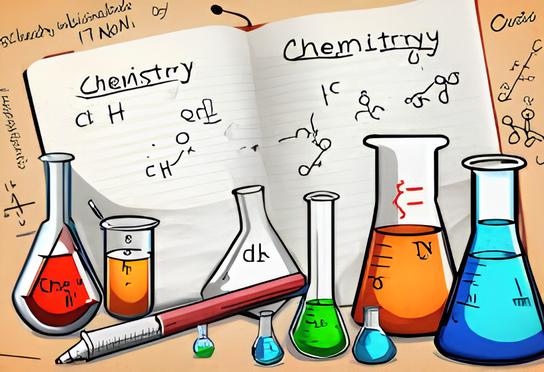JAMB Chemistry Note- Aliphatic Hydrocarbons
Definition of Aliphatic Hydrocarbons
Aliphatic hydrocarbons are organic compounds consisting of carbon and hydrogen atoms arranged in straight chains, branched chains, or non-aromatic rings. These hydrocarbons are classified into three main homologous series:
- Alkanes (saturated hydrocarbons).
- Alkenes (unsaturated hydrocarbons with at least one double bond).
- Alkynes (unsaturated hydrocarbons with at least one triple bond).
1. Alkanes
General Formula: CnH2n+2
Alkanes are saturated hydrocarbons containing only single covalent bonds between carbon atoms.
Properties:
Physical Properties:
- State: C1-C4: Gases (e.g., methane, ethane).
- C5-C17: Liquids (e.g., pentane).
- C18 and above: Solids (e.g., paraffin wax).
- Boiling and Melting Points: Increase with molecular size due to stronger van der Waals forces.
- Solubility: Insoluble in water but soluble in nonpolar solvents like benzene.
Chemical Properties:
- Combustion: Complete combustion produces carbon dioxide and water: CH4 + 2O2 → CO2 + 2H2O. Incomplete combustion produces carbon monoxide or soot.
- Substitution Reactions: Alkanes react with halogens under UV light via a free-radical mechanism: CH4 + Cl2 →UV CH3Cl + HCl.
- Test for Alkanes: Alkanes do not decolorize bromine water or acidified potassium manganate(VII), showing they are saturated hydrocarbons.
2. Alkenes
General Formula: CnH2n
Alkenes are unsaturated hydrocarbons containing at least one carbon-carbon double bond (C=C).
Properties:
Physical Properties:
- Similar to alkanes but generally have lower boiling points due to fewer hydrogen atoms.
- Nonpolar and insoluble in water but soluble in organic solvents.
Chemical Properties:
- Combustion: Similar to alkanes but produce a smokier flame due to incomplete combustion.
-
Addition Reactions:
- Hydrogenation: Adds hydrogen to convert an alkene to an alkane: C2H4 + H2 →Ni C2H6.
- Halogenation: Adds halogens (e.g., bromine) to form dihalides: C2H4 + Br2 → C2H4Br2.
- Polymerization: Forms long-chain polymers: n(C2H4) → -(CH2-CH2)-n (polythene).
- Test for Alkenes: Alkenes decolorize bromine water (orange to colorless) and acidified potassium manganate(VII) (purple to colorless), showing they are unsaturated.
3. Alkynes
General Formula: CnH2n-2
Alkynes are unsaturated hydrocarbons containing at least one carbon-carbon triple bond (C≡C).
Properties:
Physical Properties:
- Nonpolar, insoluble in water, and soluble in organic solvents.
- Similar to alkenes but slightly higher boiling points.
Chemical Properties:
- Combustion: Produces carbon dioxide and water with a very smoky flame.
- Addition Reactions: Reacts with hydrogen to form alkenes or alkanes: C2H2 + 2H2 →Ni C2H6.
- Test for Alkynes: Terminal alkynes react with ammoniacal silver nitrate (Tollen’s reagent) to form a white precipitate of silver acetylide, distinguishing them from alkenes.
Fractional Distillation of Petroleum
Petroleum is a complex mixture of hydrocarbons, including alkanes, alkenes, cycloalkanes, and aromatic hydrocarbons. To separate its components, fractional distillation is used.
Process of Fractional Distillation:
- Heating the Crude Oil: Crude oil is heated to about 350°C in a furnace, turning most of it into vapor.
- Introduction into a Fractionating Column: The vaporized oil enters a tall fractionating column where the temperature decreases from the bottom to the top.
-
Separation by Boiling Point:
- Larger molecules (higher boiling points) condense at the bottom.
- Smaller molecules (lower boiling points) rise higher before condensing.
Major Fractions and Their Uses:
| Fraction | Boiling Range (°C) | Uses |
|---|---|---|
| Gases | Below 30 | Fuel for cooking and heating. |
| Gasoline (Petrol) | 30–200 | Fuel for cars. |
| Kerosene | 200–300 | Jet fuel, cooking stoves. |
| Diesel | 250–350 | Fuel for trucks and engines. |
| Lubricating Oil | 300–400 | Machinery lubrication. |
| Residue (Bitumen) | Above 400 | Road surfacing and roofing. |
Cracking
To meet the demand for lighter, more useful fractions like gasoline, cracking is employed.
Types of Cracking:
- Thermal Cracking: High temperature (450–750°C) and pressure (70atm). Produces smaller alkenes and alkanes.
- Catalytic Cracking: Uses a catalyst (e.g., zeolite) at lower temperatures (450°C). Produces more branched alkanes and aromatic hydrocarbons, which have higher octane numbers.
Octane Number
The octane number measures the quality of gasoline. High octane numbers indicate better anti-knock properties in engines.
Example: Iso-octane has an octane number of 100, while n-heptane has an octane number of 0.






